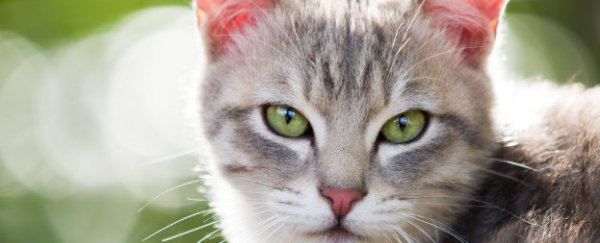Ask any cat person to describe their feline friend, and they'll likely affectionately say "jerkface". Cat people also know, however, that each little fuzzy jerkface is its very own idiosyncratic self.
Or are they? According to new research, each cat's personality and behavior can be defined using a combination of just seven traits. But before you get defensive about the complexity of your cat's personality, this is for a good cause: it can help our friends live happier lives.
"Compared to dogs, less is known about the behavior and personality of cats, and there is demand for identifying related problems and risk factors," says veterinary scientist Salla Mikkola of the University of Helsinki in Finland.
"We need more understanding and tools to weed out problematic behavior and improve cat welfare. The most common behavioral challenges associated with cats relate to aggression and inappropriate elimination [urinating or defecating in the house]."
The research was undertaken by way of a 138-question survey, posted on animal welfare website Petsofi, and filled out by the cats' owners. This is because cats can behave very differently in a laboratory environment than the way they behave at home, so observing them in an experiment could yield inaccurate results.
The questionnaire asked people to enter, among other things, their cat's sex, age, breed, coat color, and main activity. The humans were also asked to fill out the questionnaire a second time after an interval had passed. This allowed the researchers to gauge the accuracy of the reports by comparing the two surveys.
After excluding cats whose age could not be verified, as well as duplicate entries, and those with too much missing information, the final sample consisted of 4,316 cats. From these, the researchers were able to narrow cat traits down to five personality traits and two behavioral traits. These were:
- Activity/playfulness
- Fearfulness
- Aggression towards humans
- Sociability towards humans
- Sociability towards cats
- Litterbox issues (such as refusing to use the litterbox, or using it poorly)
- Excessive grooming
Perhaps unsurprisingly, the results also revealed that different breeds skew towards different personality traits.
"The most fearful breed was the Russian Blue, while the Abyssinian was the least fearful," says veterinary scientist Hannes Lohi of the University of Helsinki.
"The Bengal was the most active breed, while the Persian and Exotic were the most passive. The breeds exhibiting the most excessive grooming were the Siamese and Balinese, while the Turkish Van breed scored considerably higher in aggression towards humans and lower in sociability towards cats."
The point of this research was not to perform behavioral analysis of the felines involved, but to demonstrate the validity of the team's survey for collecting information on feline behavior.
Although there are a number of limitations to the research – such as the inability to verify the humans' reports of their cats' breeds and ages – the team believes that, overall, the survey model could be a useful tool for understanding what makes cats tick.
In addition, the data collected did help sketch an outline of how cat personalities can vary, as well as provide a basis from which future research can be conducted.
"We wanted to obtain a rough idea of whether there are differences in personality traits between breeds," Mikkola said.
"In further studies, we will utilize more complex models to examine factors that affect traits and problematic behavior. In these models, we will take into consideration, in addition to its breed, the cat's age, gender, health, and a wide range of environmental factors."
The research has been published in Animals.
